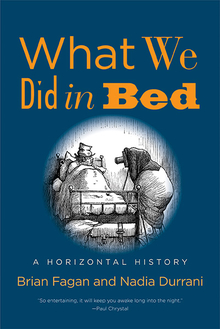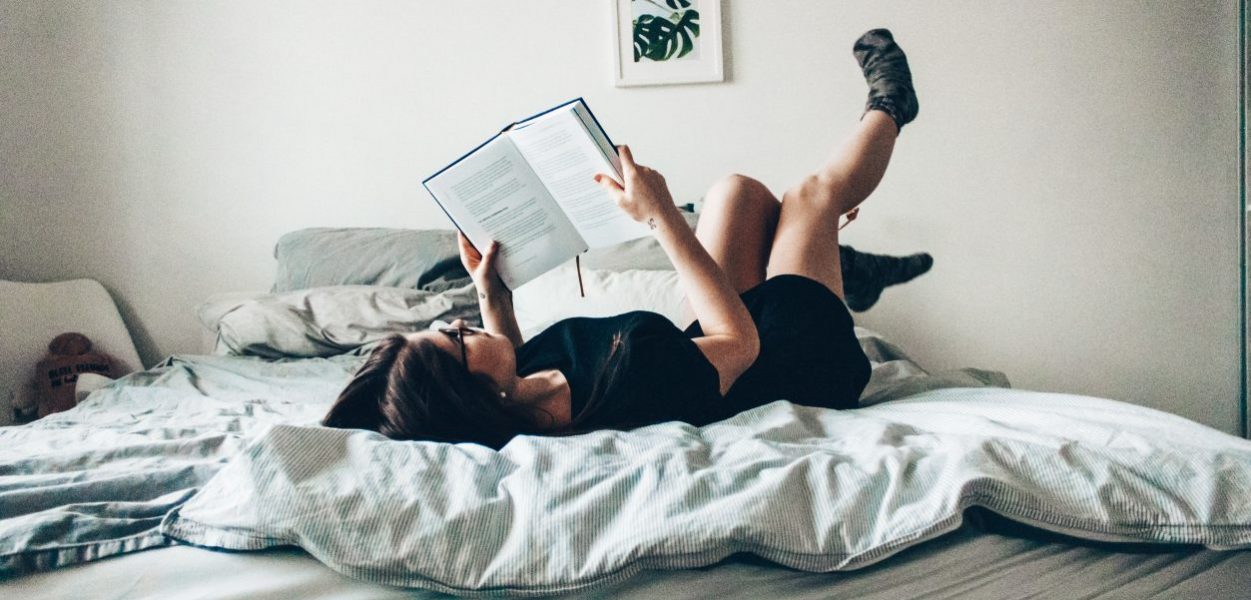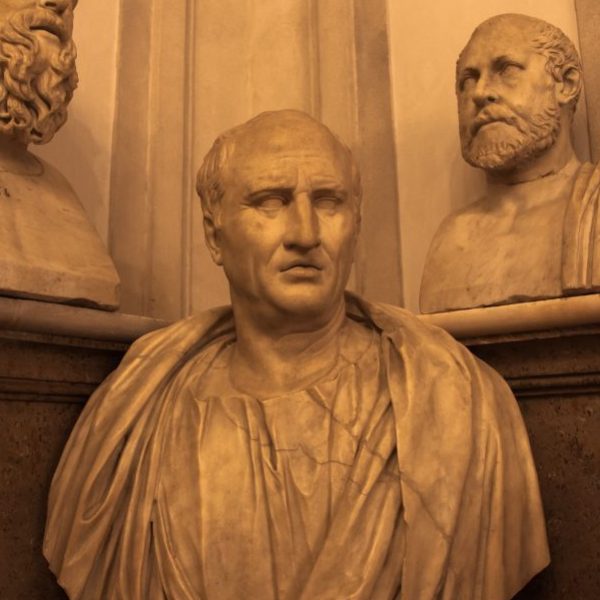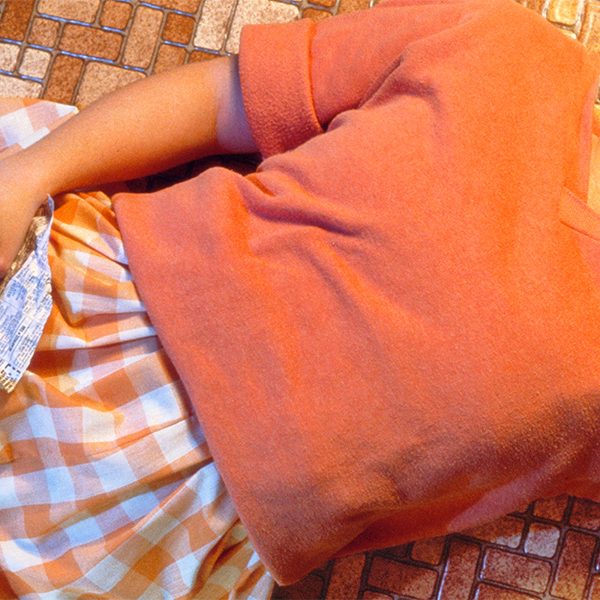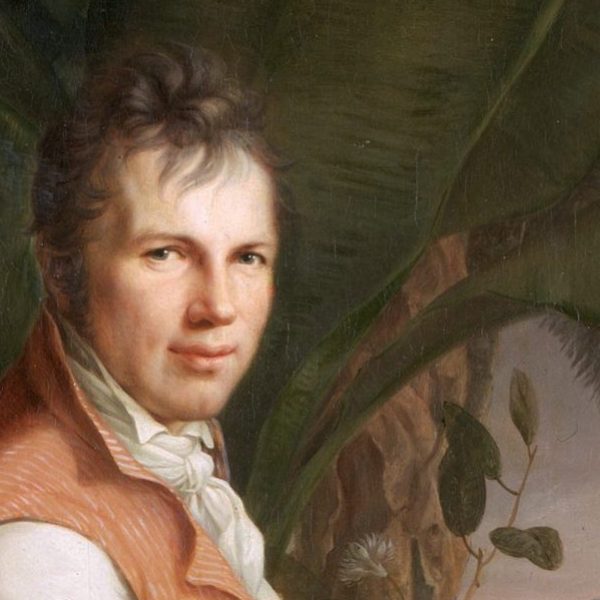A Tour de Bed
Brian Fagan and Nadia Durrani—
What did our ancestors do in bed? It’s an intriguing question. One that we, as archaeologists, realized nobody had sought to answer. Beds, after all, have been around for a very long time—the oldest known is at least 77,000 years old, and the basic design of the raised sleeping platform goes back at least five thousand.
If there’s one thing that we all do in bed, it is to sleep. But how we slept, when and with whom, has varied widely depending on the time and place. It seems that before the Industrial Revolution, with its clocks and rigid timetables, many of us slept in two phases—enjoying two chunks of say, four hours sleep, with a chunk of wakefulness in between. If you suffer from insomnia in the small hours, as many of us do, it may simply be that you need to return to this original relaxed “biphasic” way of sleeping—though whether your timekeeping boss will agree is anybody’s guess.
Today, we have fairly rigid views on privacy and whom we allow into our beds. Yet in the past we often shared our beds with many. In pre-modern times it was quite typical for whole families, friends, or kin groups to bed down together. Travelers often slept with complete strangers, platonically snuggling up for the night without a second thought (unless your bedfellow was strange as, for example, described in one hair-raising scene in Moby Dick). The ultimate expression of the shared travelers’ bed was the famous Great Bed of Ware, a celebrated tourist attraction, housed within various inns in the English town of Ware. A 1765 newspaper report claimed, perhaps apocryphally, that twenty-six butchers and their wives (fifty-two people) frolicked in this vast bed. You can see it in London’s Victoria and Albert Museum. Beds, particularly such big and fancy beds, were always expensive, and only the rich could ever afford to sleep apart. Perhaps that’s why one anonymous observer, on hearing the gossip that Donald Trump and his wife have separate beds, declared “how very royal of them.”
Sleep therapists today tell us that our beds are only to be used for sleep and sex, but was this always so? Certainly, the bed has always served as a platform for sex—from the wedding beds of the ancient Mesopotamians, to the brothels of Pompeii, and into the boudoirs of Victorian England. After all, our sexuality has, as far as we know, changed little since the first modern humans emerged over 300,000 years ago. But the way we have dealt with this drive, along with the bed’s role in the process, has ranged from the austere to the decadent, and everything in between. In patriarchal pre-industrial civilizations, everything revolved around the male and the procreation of children. For the Egyptians and the Mesopotamians, marriage and the wedding bed were a business transaction. Both land and possessions passed from father to son. Only a few non-Western societies like the Hopi and Iroquois of North America and the Trobriand islanders of the southwestern Pacific kept children and wealth in the mother’s family, which meant the women were free to invite men into their beds and lives—and chuck them out again, as they wished. Traditional Chinese marriages were usually formally arranged. Imperial courtiers managed the emperor’s sex life on a strict calendar. At the full moon, he spent the night alone with the empress. Centuries later, Victorian Britain frowned on fornication for pleasure, the ultimate Christian model being to replicate the Virgin mother, while Hindu Indians considered sex a religious duty.
Sex, of course, can lead to birth, yet for most of human history, women used to labor on the ground, or in the arms of midwives, not lying back in hospital beds. When that began in seventeenth-century France, the beds were originally very unhygienic—sometimes containing more than one new mother—and a great many women perished from postpartum “childbed fever.”
And so we come to death, and the deathbed. We surround death with more rituals than any other human event, and amid the drama, the bed consistently takes center stage. In its most extreme forms, a dying monarch was dragged into his imposing bed for a last, formal farewell. As early as 4000 BC, people in Egypt were buried on bed-like stretchers. Pharaoh Tutankhamun went to eternity accompanied by his golden bed, a number of funerary couches, and even his folding camp bed. Deathbeds became thoroughly social places where friends, family, and others would gather, often in large numbers. Monarchs favored very public deaths. Chinese emperors even spoke the name of their chosen successors. Indian maharajas chose and adopted their heirs on their deathbeds, a wise move in volatile states where the succession was in dispute. French King Louis XIV died in public as dozens of courtiers and others passed through his bedchamber. Gathering around deathbeds was important, even a religious duty. Queen Victoria’s carefully staged deathbed would be considered mawkish today, but was much approved of in her day. Many of us still pass on “surrounded by family and friends.” Humans are, after all, social creatures, and a deathbed is an important moment.
What about the bed itself? Today it is a pragmatic piece of furniture that we hide away. Yet this was not always the case. Before the modern era, the bed was often one of the most valuable pieces of furniture a person might own—if you owned one at all. William Shakespeare, for example, left his “second best bed” to his wife Anne Hathaway, which was not the snub we might imagine, but a thoughtful gift of their intimate shared bed (their best bed was displayed in the front of the house, for guests to admire).
The bed was indeed once so important, and so worthy of public appreciation, that King Louis XIV of France ruled from his. His rising and going to bed were elaborate ceremonial occasions, witnessed by those in high favor. Royal beds were symbols of authority and power. And in World War II, Winston Churchill often governed Britain from his bed. In a way, his bed, like Louis XIV, was a public place.
The world of beds is a vast one, with grand four poster beds that might fill whole rooms and of Indian charpoys, the ultimate in lightweight, portable beds, Tracey Emin’s disordered mattress, or John Lennon and Yoko Ono and their “peace bed.” There are camp and mobile beds—Tutankhamun had a camp bed (so did Napoleon), Murphy beds, which fold into walls (James Bond was shot in one and recovered), and various futuristic beds that you can move around the room at the touch of a button. Water beds, rumored to originate in Mesopotamian times, may also be making somewhat of a comeback.
There are great advances taking place in mattress technology (arguably making modern mattresses as good for one’s back as, ahem, sleeping on the floor). Electronic advances also mean that you can now sleep duly monitored, hour-by-hour, or lull yourself to sleep in a cozy pod with a full media center or the web to amuse you.
Lie back and think of your bed! For our beds, and all we do on them, truly reveal a great deal about ourselves, our values, and our society. Our beds are even giving us an insight into the future of our interconnected yet individualistic world, with all its dreams and nightmares writ large among our disordered sheets. As Groucho Marx once joked: “Anything that cannot be done in bed isn’t worth doing at all.” Perhaps he’s right. We certainly think so.
Brian Fagan is one of the world’s leading archaeological writers and an internationally recognized authority on world prehistory. He is Professor Emeritus of Anthropology at the University of California, Santa Barbara. His other books include Fishing: How the Sea Fed Civilization and A Little History of Archaeology.
Nadia Durrani is a writer and world archaeologist. She read archaeology and anthropology at Cambridge University and has a PhD in archaeology from UCL. She is an experienced journalist and the co-author of several of Brian Fagan’s market-leading textbooks.
Further Reading:
